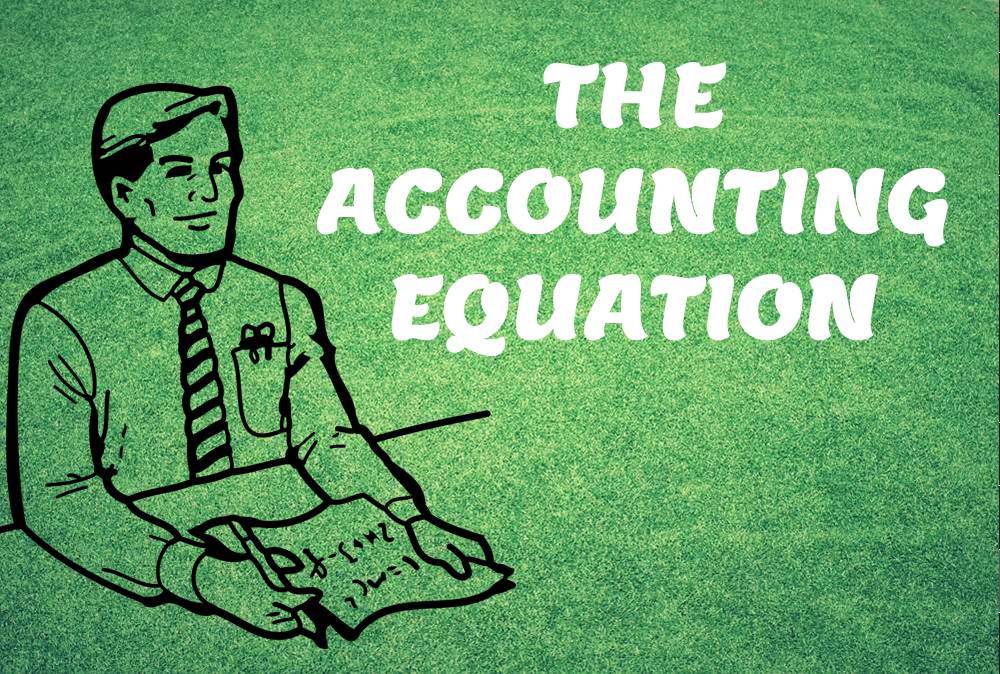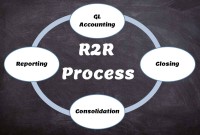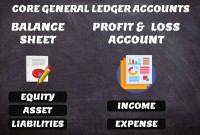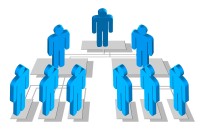- Home
- Business Processes
- Industry Knowledge
- Aerospace Industry
- Automotive Industry
- Banking Domain
- BFSI Industry
- Consumer/ FMCG Industry
- Chemicals Industry
- Engineering & Construction
- Energy Industry
- Education Domain
- Finance Domain
- Hospitality Domain
- Healthcare Industry
- Insurance Domain
- Retail Industry
- Travel and Tourism Domain
- Telecom Industry
- Leadership Skills
- eLearning
- Home
- Functional
- General Ledger (Record to Report)
- The Accounting Equation
The Accounting Equation
In this article we will help you understand the double-entry accounting system and state the accounting equation and define each element of the equation. Then we will describe and illustrate how business transactions can be recorded in terms of the resulting change in the elements of the accounting equation.
The Five Account Types:
Double-entry accounting uses five and only five account types to record all the transactions that can possibly be recorded in any accounting system. These five accounts are the basis for any accounting system, whether it is a manual or an automated accounting system. The five account types are the following:
Balance Sheet Accounts:
In accounting, the economic resources of a business are categorized under the terms of assets, liabilities, and owner's equity. These terms also refer to the three types of accounts in which a business records its transactions.
1. Assets:
Things of value that is owned and used by the business. Examples of assets include cash, land, buildings, and equipment.
2. Liabilities:
Debts that are owed by the business. These are the rights of the creditors or third parties over the assets of the business. Examples of liabilities include amounts due to suppliers, loans payable back to banks.
3. Equity:
The owner's claim to business assets. These are the rights of the owners over the assets of the business. Examples include capital invested by the owners, the shares subscribed by the public or the residual profit made by the business last year.
Profit and Loss Accounts:
The operations of the business can either result in profit or loss. It may increase the economic value over a period of time in case of profit or might decrease the economic worth in case of loss. All such activities can be recorded using two types of profit and loss accounts:
4. Revenue:
The amounts earned from the sale of goods and services. Examples include sales, interest received on bank deposits, a commission earned by the business.
5. Expenses:
Costs incurred in the course of business. Examples include purchases made for material, payment of rent, expenses for employee costs.
The balance sheet accounts are permanent accounts that carry a balance from year to year, like checking accounts, accounts receivable, and inventory accounts. The profit and loss accounts are temporary accounts that track revenues and expenses for a yearlong fiscal period and are then closed, with balances transferred to an equity account.
There can be thousands of sub-types; known as natural accounts which help in further classifying the nature of the transaction, but they all belong to one of the above lists, as practically all financial transactions can be recorded using these five types of accounts.
The Economic Impact of Transactions:
Businesses conduct transactions by exchanging goods or services for money. Transactions can take various forms, depending on the company, but whatever kind of transaction has occurred; it impacts the business's resources. The resources of a business refer to its supply of goods, services, information, or expertise that allows the business to operate and grow.
Businesses exchange items of equal value, real or perceived. Imagine that an exchange is like balancing a scale—the left side goes down (a service is given) and the right side reacts (cash is received) to maintain the balance of the scale. The exchange of goods or services, information, or expertise has an impact on the one side of the scale which is compensated by the value that the business gets in exchange that has an impact on the other side of the scale. The perceived value of both these impacts should be equal on the scale.
Accounting uses a technique to show how a transaction changes the business's resources while maintaining a balance, or showing the equal value of the exchange. The accounting equation is a tool that is applied throughout accounting activities to show how transactions affect the asset, liability, and owner's equity accounts.
The Accounting Equation:
The resources owned by a business are its assets. Examples of assets include cash, land, buildings, and equipment. The rights or claims to the assets are divided into two types:
- The Rights of the Creditors
- The Rights of the Owners
The rights of creditors are the debts of the business and are called liabilities. The rights of the owners are called owner’s equity. The following equation shows the relationship among assets, liabilities, and owner’s equity:
- Assets = Liabilities + Owner’s Equity
- This equation is called the accounting equation. Liabilities usually are shown before the owner’s equity in the accounting equation because creditors have first rights to the assets. Given any two amounts, the accounting equation may be solved for the third unknown amount. The equation shown above represents the format seen on a balance sheet.
The profit and loss accounts (representing revenues and expenses account types) also affect equity. Revenues from the sale of goods and services increase equity, while expenses incurred in the course of business decrease equity. Therefore, the accounting equation can be expanded to assets equal liabilities plus equity plus revenues minus expenses.
- Assets = Liabilities + Owner’s Equity + Revenues - Expenses
- Every transaction that has an accounting impact, will affect at least two accounts out of the five accounts explained above. If a transaction causes one side of the equation (assets) to increase, then the other side of the equation (liabilities or owner's equity) must also increase to keep the equation in balance.
You can apply the accounting equation by determining that the total of the asset accounts equals the total of the liability accounts plus the total of the owner's equity accounts. A double-entry accounting system will record the appropriate debits and credits, and track the changes to assets, liabilities, equity, revenue, and expense accounts. Keep this fundamental rule of accounting in mind when you need to determine how a transaction affects your business's resources.
Related Links
You May Also Like
-
Learn the typical accounting cycle that takes place in an automated accounting system. We will understand the perquisites for commencing the accounting cycle and the series of steps required to record transactions and convert them into financial reports. This accounting cycle is the standard repetitive process that is undertaken to record and report accounting.
-
The general ledger is the central repository of all accounting information in an automated accounting world. Summarized data from various sub-ledgers are posted to GL that eventually helps in the creation of financial reports. Read more to understand the role and benefits of an effective general ledger system in automated accounting systems and ERPs.
-
Record to report (R2R) is a finance and accounting management process that involves collecting, processing, analyzing, validating, organizing, and finally reporting accurate financial data. R2R process provides strategic, financial, and operational feedback on the performance of the organization to inform management and external stakeholders. R2R process also covers the steps involved in preparing and reporting on the overall accounts.
-
Network Organizational Structures
The newest, and most divergent, team structure is commonly known as a Network Structure (also called "lean" structure) has central, core functions that operate the strategic business. It outsources or subcontracts non-core functions. When an organization needs to control other organizations or agencies whose participation is essential to the success, a network structure is organized.
-
Trial Balance in General Ledger
One of the greatest benefits of using a double-entry accounting system is the capability to generate a trial balance. What do we mean by trial balance? As the name suggests a trial balance is a report that must have its debits equals to credits. Understand the importance of trial balance and why it is balanced. Learn how it is prepared and in which format.
-
What is Accounting & Book Keeping
Accounting is a process designed to capture the economic impact of everyday transactions. Each day, many events and activities occur in an entity, these events and activities are in the normal course of business; however, each of these events may or may not have an economic impact. Events or activities that have an effect on the accounting equation are accounting events.
-
Prepayments and Prepaid Expenses
Prepayments are the payment of a bill, operating expense, or non-operating expense that settle an account before it becomes due. Learn the concept of prepaid expenses. Understand the accounting treatment for prepaid expenses. Understand the concept by looking at some practical examples and finally learn the adjusting entry for these expenses.
-
Five Core General Ledger Accounts
Typically, the accounts of the general ledger are sorted into five categories within a chart of accounts. Double-entry accounting uses five and only five account types to record all the transactions that can possibly be recorded in any accounting system. These five accounts are the basis for any accounting system, whether it is a manual or an automated accounting system. These five categories are assets, liabilities, owner's equity, revenue, and expenses.
-
Introduction to Organizational Structures
Organizations are systems of some interacting components. Levitt (1965) sets out a basic framework for understanding organizations. This framework emphasizes four major internal components such as: task, people, technology, and structure. The task of the organization is its mission, purpose or goal for existence. The people are the human resources of the organization.
-
Different Types of Organizational Structures
Modern business organizations run multiple product and service lines, operate globally, leverage large number of registered legal entities, and operate through complex matrix relationships. To stay competitive in the current global business environment, they must often develop highly diverse and complex organizational structures that cross international borders.
Explore Our Free Training Articles or
Sign Up to Start With Our eLearning Courses

About Us
Learning
© 2023 TechnoFunc, All Rights Reserved










